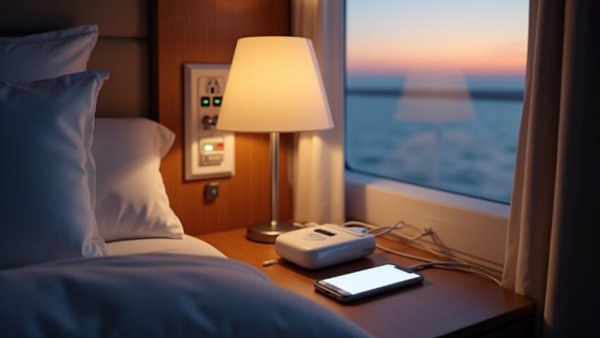Fiji eyes inclusive tourism growth and stronger ties with India

Fiji’s tourism sector stands as a pillar of its economy, contributing nearly 40 per cent to the national GDP. In an exclusive conversation with Travel Trade Journal (TTJ) during the Fiji Tourism Exchange 2025, Hon Viliame Gavoka, Deputy Prime Minister and Minister for Tourism and Civil Aviation, Fiji, offered a comprehensive perspective on Fiji’s growth trajectory.
Expanding the Footprint
Tourism plays a vital role in Fiji’s economy, currently contributing nearly 40 per cent of our GDP. Hon. Gavoka emphasised, “However, much of this activity is centred in just two provinces: Nadroga-Navosa and Ba. With Fiji consisting of 14 provinces, our goal is to extend the benefits of tourism more equitably across the entire nation.”
The roadmap to achieving this inclusivity lies in the Sustainable Tourism Framework launched last year. “By 2027, we are forecasting around 1.25 million visitors and an economic contribution of FJ$4 billion. For a population of under a million, this is significant, and we still have room to grow without facing the risks of overtourism,” he added.
Using Denarau Island as a case in point, a region that transformed over 50 years into one of Fiji’s most developed integrated resorts, the minister expressed confidence that similar long-term growth stories are possible in less-developed provinces.
From Sun and Sand to Cultural Immersion
While Fiji remains synonymous with pristine beaches and azure waters, the tourism narrative is steadily evolving. “Sun, sand, and sea are still central, but today’s traveller seeks more. ‘Experiential travel’ is the new frontier,” Gavoka noted.
Fiji is diversifying its offerings from tourism retreats designed for rest and recovery to immersive community experiences. Govoka also mentioned, “Authenticity is our strength. Guests often ask, ‘What else can we do here?’ We are responding with meaningful experiences that immerse them in our way of life.”
The India Opportunity
With India poised to become the world’s fifth-largest outbound travel market, Fiji is making strategic moves to deepen ties with this emerging powerhouse. “Currently, 45 per cent of our tourists come from Australia and 25 per cent from New Zealand. To drive new growth, we must look toward long-haul markets, and India is a natural fit,” Govoka affirmed.
Having visited India multiple times since 2005, Govoka acknowledged the transformative rise in Indian outbound travel and emphasised that Fiji is well-positioned to attract Indian tourists across multiple segments. “We are targeting niche areas like weddings, honeymoons, and even film shoots. Indian wedding planners have found local Fijian operators who understand the scale and specificity of Indian celebrations,” he shared.
“Our six and seven-star resorts offer the privacy and luxury that discerning Indian honeymooners and celebrities seek. Many of them come here incognito,” he added.
Building Market Presence
Fiji’s concerted marketing efforts are beginning to bear fruit in India. Campaigns like the Loloma Hour, which emphasise the warmth and emotional resonance of the destination, and the Fiji Matai Specialist Program, which trains Indian travel agents to become destination experts, have received encouraging feedback.
“Matai means ‘expert’ in Fijian. We want Indian agents to be experts on Fiji. We target key operators, train them, and equip them with the tools to sell the destination authentically,” said Govoka.
Fiji has allocated a dedicated annual marketing budget for the Indian market, and the budget will increase in tandem with increased air capacity. Govoka explained, “Everything we do is closely aligned with our national airline, Fiji Airways, which plays a critical role in supporting our marketing activities.”
Currently, Fiji Airways operates flights to all major cities in Australia: Cairns, Brisbane, Sydney, Canberra, Melbourne, and Adelaide, each of which sees growing Indian inbound traffic. “Indian travellers arriving in these cities can easily connect onward to Fiji, making us an increasingly accessible long-haul destination,” Govaka added.
Sustaining Culture Through Tourism
A core pillar of Fiji’s tourism philosophy is the preservation and celebration of indigenous culture. “The future of tourism globally lies with indigenous communities. Much of the world remains unexplored in this sense,” Gavoka noted.
The minister shared an example of how tourism in Fiji is playing a vital role in preserving intangible cultural heritage. Recalling a recent visit to a village launching a new tourism project centred around a waterfall, he recounted a moving cultural moment.
“As part of the opening, they held a traditional welcome ceremony for me, as the visiting dignitary. What made it extraordinary was that the ritual they performed hadn’t been seen or practiced in over 50 years. Fortunately, there was an elder in the village who still remembered the exact customs and sequence. He was able to guide the younger generation in reviving it,” Govoka shared.
He further emphasised, “Tourism does not just boost the economy, it helps preserve our traditions, keeps stories alive, and allows communities to take pride in their heritage.” This is especially relevant as visitors increasingly seek immersive, community-led experiences. Fiji is fortunate; its culture is not confined to museums. It is how they live, how they welcome, and how they share.
Come, Be Spoiled in Fiji
Reflecting on his visits to India, Govaka shared, “When I visit India, I am always spoiled by the warmth of your people. In return, we hope to spoil Indian visitors in Fiji with the same love.” Extending a warm invitation to Indian travellers, he added, “Fiji is a small nation in the vast Pacific, but it is big on heart. Come visit, and you will understand why so many return.”





